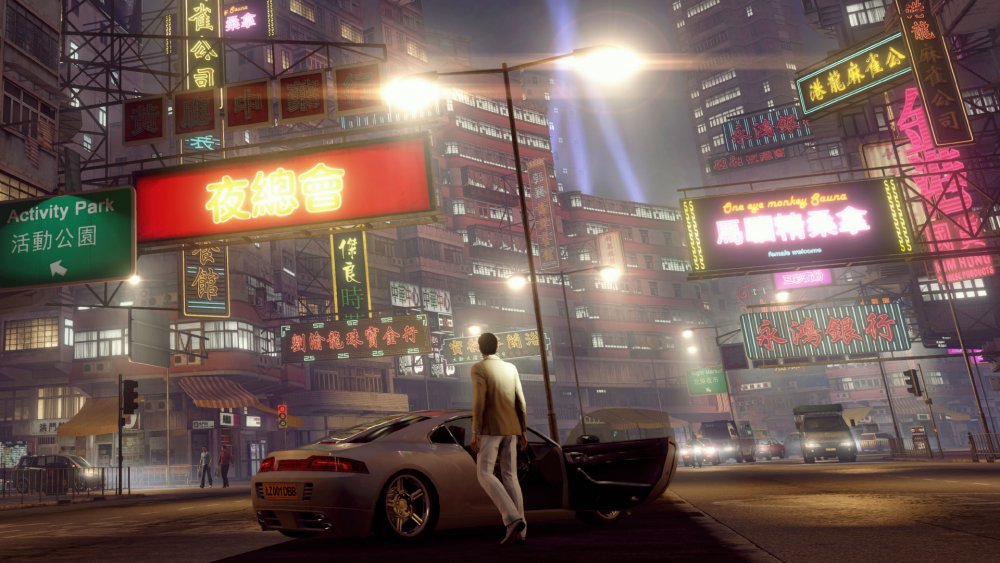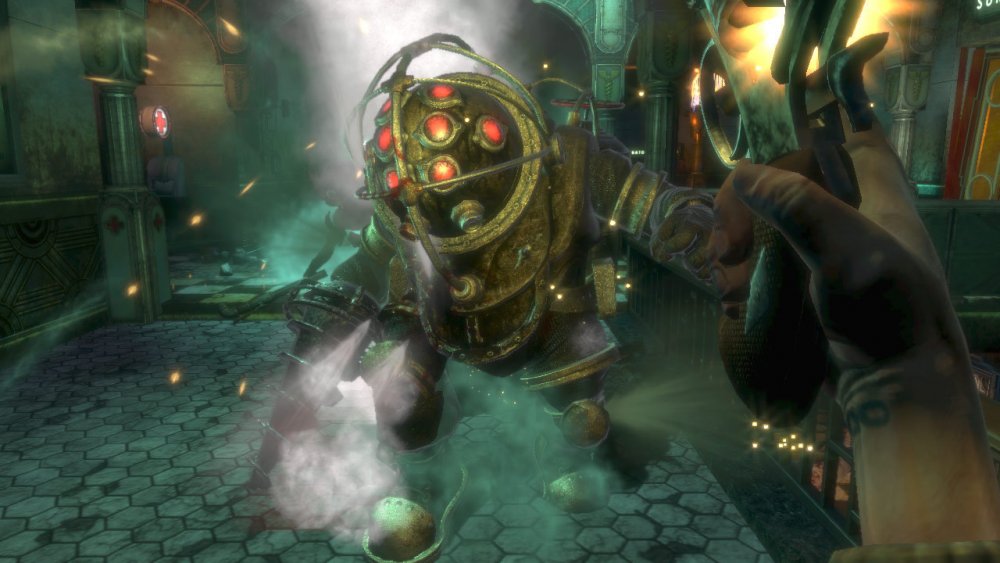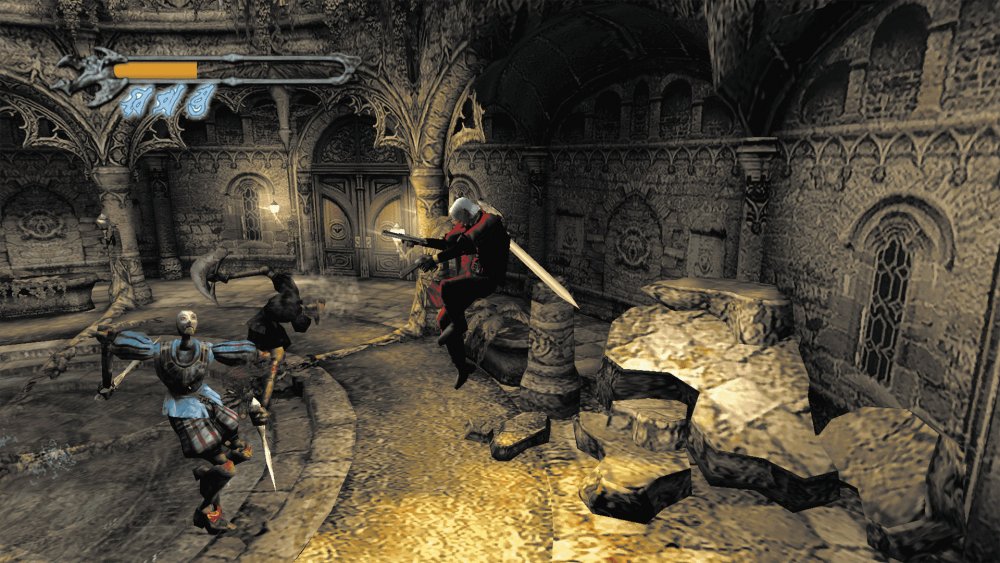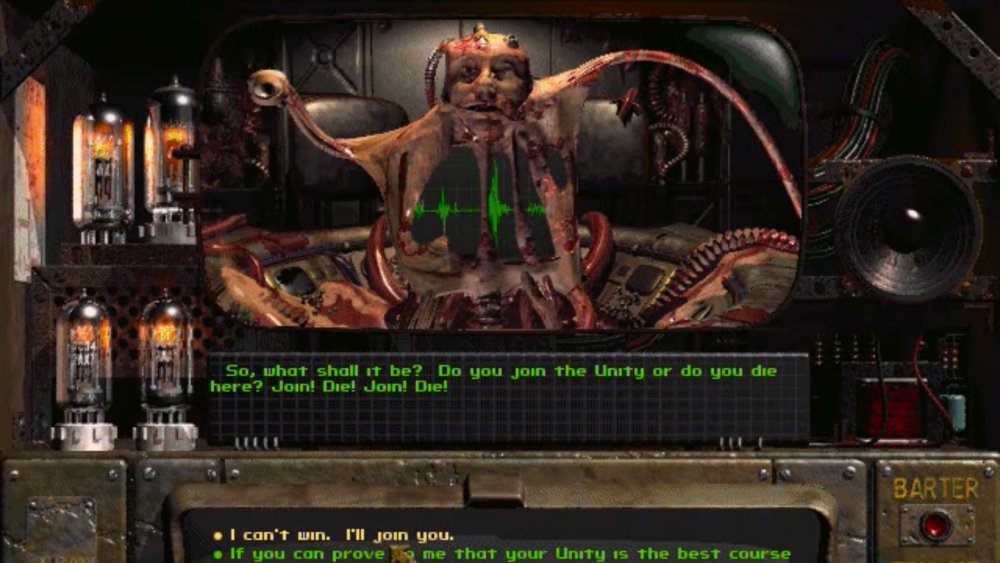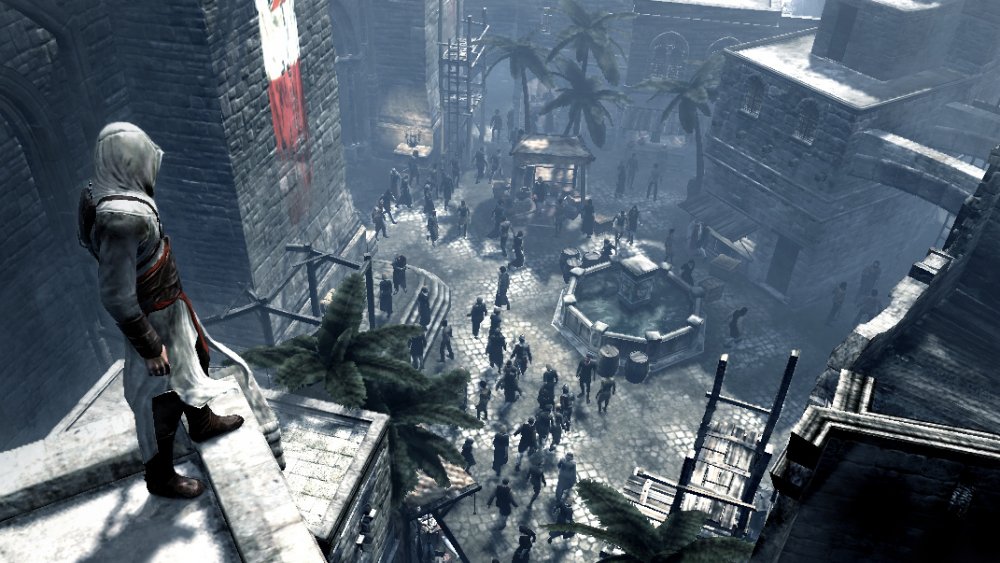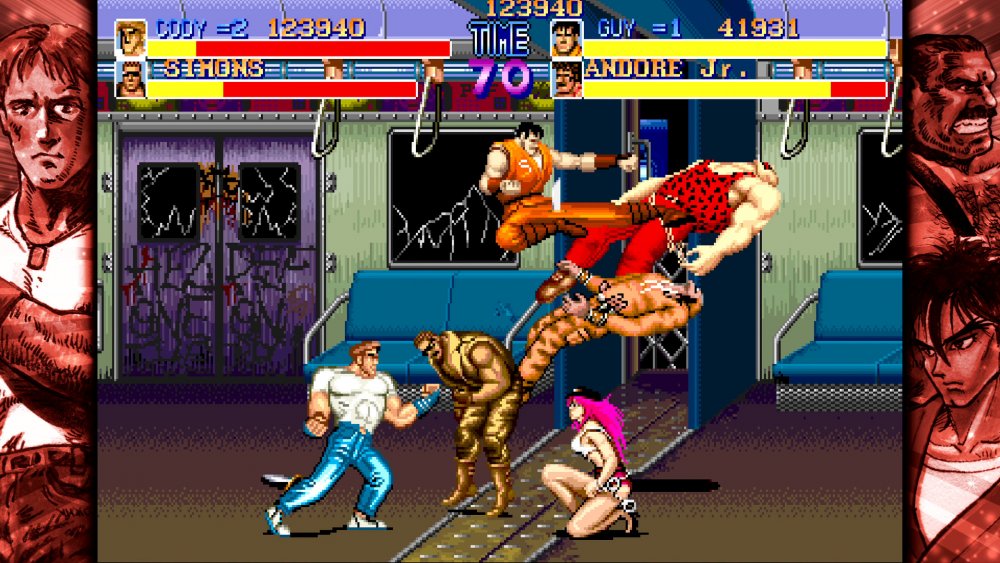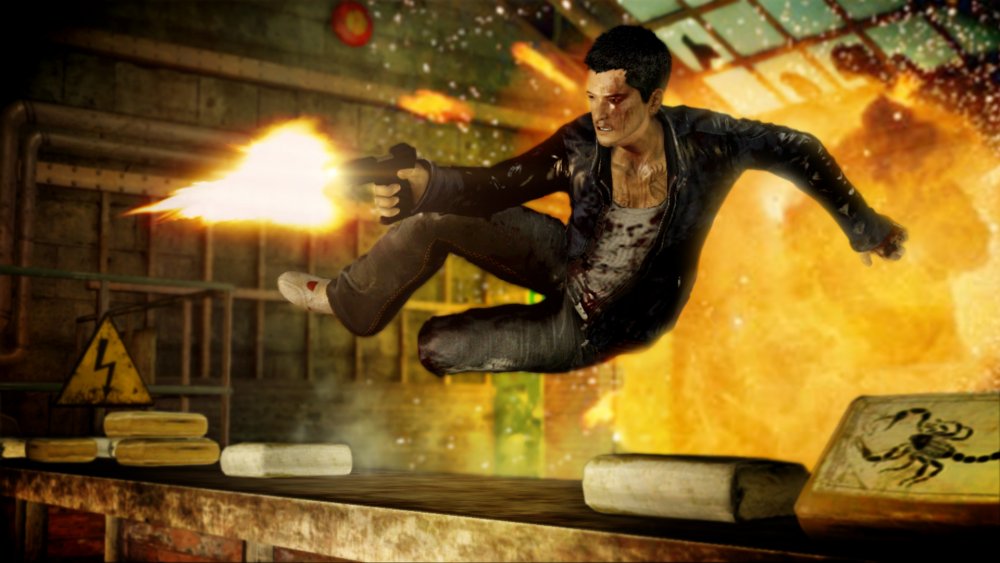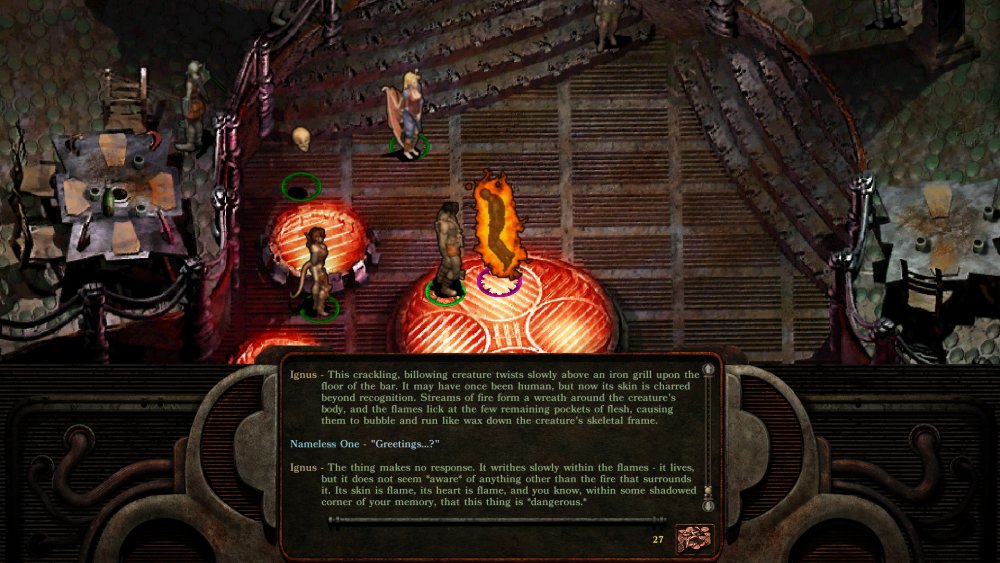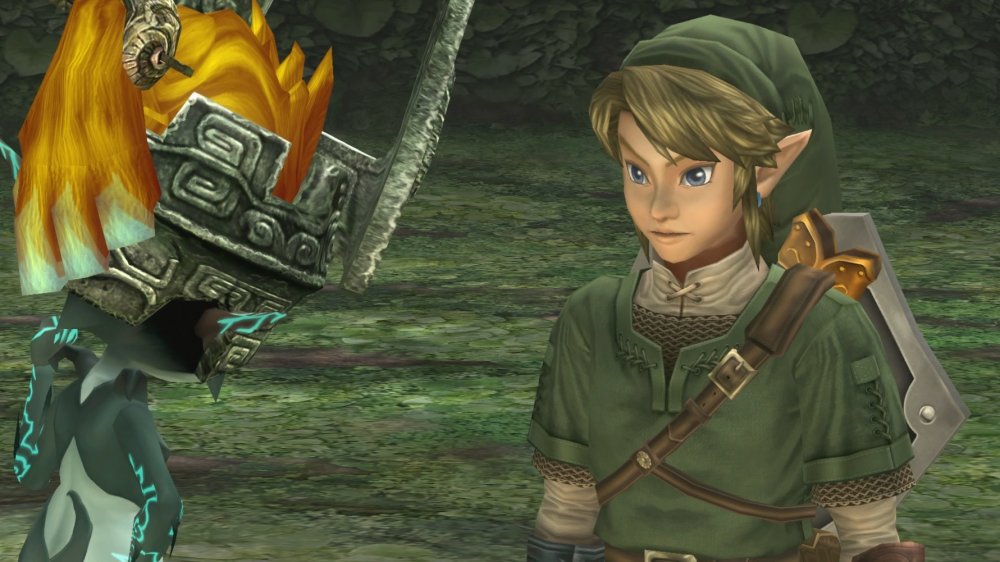Games You Never Knew Started Out As Sequels
Sequels are all the rage, even though some of this year's hotly anticipated titles are standalone games with no prior history or legacy, such as Cyberpunk 2077 and Outriders. Nevertheless, the majority of 2020's most exciting releases are follow-ups, and gamers eagerly await entries like Final Fantasy 7 Remake and The Last of Us 2.
Game development is a long and arduous experience, especially for sequels. During development, many games change direction — and genres — as often as they are cancelled. Sometimes, these changes are so pronounced developers realize their follow-up project would fare better as a standalone. At other times, developers have to abandon beloved sequel concepts because of legal red tape. Though painful, this leaves them free to continue development under a new name.
However they came to be, the gaming industry is full of titles that began life as sequels. Here are a few prominent examples.
BioShock shares more than a suffix with System Shock 2
BioShock's status as a spiritual successor to System Shock 2 is well-known and even more well-documented. Both games share design elements and production teams. More importantly, BioShock became a cult classic just like its big brother thanks to spooky locations and some of the most memorable plot twists in video games since the reveal of SHODAN. However, BioShock wasn't always designed to be System Shock 2's sequel in spirit only.
According to a Eurogamer, BioShock creative director Ken Levine envisioned his game as System Shock 3, although "envision" might be too strong a word. Levine wrote a pitch for the sequel to one of the greatest cyberpunk games of all time. However, that pitch was just a short, two-page document sent to Electronic Arts detailing how he planned to resolve System Shock 2's cliffhanger ending. The company swiftly rejected the proposal.
While Levine and the rest of his team at Irrational Games moved onto other projects, the idea of returning to System Shock's style of gameplay stuck in the backs of their minds. Eventually, this blossomed into BioShock.
Devil May Cry was almost a super stylish Resident Evil
Devil May Cry is inexorably linked to Resident Evil. Hideki Kamiya, the director of the first Devil May Cry game, started at Capcom as a system planner for, you guessed it, Resident Evil. He also directed Resident Evil 2 before he had the opportunity to direct Resident Evil 4. But, didn't the director of the first Resident Evil, Shinji Mikami, direct Resident Evil 4? This is technically correct, but only because he directed the final version of Resident Evil 4. Kamiya, meanwhile, directed a scrapped version that eventually transformed into Devil May Cry.
Resident Evil 4 is one of the few games where the junked versions have received as much publicity, if not more, as the release version — especially the Silent Hill-esque Hook Man version. One of the earliest versions of Resident Evil 4, pitched by Kamiya, was a fresh take on the franchise that emphasized "coolness." And credit where credit was due, Kamiya's idea was cool, but according to an interview with Shinji Mikami, it just wasn't Resident Evil material. On the bright side, Kamiya's scrapped version, combat and characters included, laid the groundwork for Devil May Cry.
Fallout was going to be Wasteland 2, but then EA happened
Before Interplay Entertainment developed Fallout, it created the post-apocalyptic RPG Wasteland. And, EA published the game. Wasteland was well-received, but when the time came to capitalize on the title's success and make a sequel, EA decided to develop the follow-up on its own. The result, titled Fountain of Dreams, was a substandard and reviled mess, but Interplay's problems didn't end there. As the publisher, EA kept the rights to the Wasteland name, and when Wasteland's director Brian Fargo tried to reclaim the Wasteland license to make Wasteland 2, his attempts failed.
However, since Fargo couldn't legally develop Wasteland 2, he created a game that was Wasteland in everything but name. And that game was Fallout. The title — and the Fallout franchise in general — is understandably full of Wasteland analogues. The iconic Brotherhood of Steel, for instance, is almost identical to Wasteland's Guardians of the Old Order, and Fallout's Deathclaws are giant mutant iguanas not unlike Wasteland's Shadowclaws. Thankfully, the Wasteland saga didn't end with Fallout, as InXile Entertainment gained the rights to the Wasteland franchise and developed Wasteland 2 with Fargo's help. Better yet, Wasteland 3 is scheduled to release later this year.
Assassin's Creed started as a game about protecting the titular Prince of Persia
The Prince of Persia franchise has hibernated since 2010. Granted, the series received two mobile entries, but Prince of Persia: The Forgotten Sands was the last genuinely new offering. During the gap, Assassin's Creed seems to have effectively replaced the Prince of Persia series. An unsurprising turn of events, given Assassin's Creed was almost an entry in the Prince of Persia library.
According to an Edge article, Assassin's Creed began with a thought: What if the titular Prince of Persia wasn't a swashbuckling hero who could perform feats of acrobatics that would make Cirque du Soleil performers green with envy? What if the prince was just a regular child prince? Those questions were posed by Prince of Persia: The Sands of Time's creative director Patrice Désilets, who had the perfect answer: The prince would need a protector. Désilets' proposed idea — inspired by the real-life missionary Hassan-i Sabbah — would star an assassin who guards the AI-controlled royal.
The game was originally called Prince of Persia: Assassin. But, as time went on, the game became less about the prince and more about the assassin. Eventually, the prince was completely dropped, and Assassin's Creed was born.
Final Fight was Street Fighter 2 before Street Fighter 2 existed
In the world of arcade fighters, it doesn't get more iconic than Street Fighter. The series has spawned countless sequels, remasters, re-releases, crossovers, and cross-media properties. However, according to the researchers at Did You Know Gaming?, the franchise took a left turn into a different genre early in its life, a move that spawned a sister series.
Long before Street Fighter 2 was produced, Capcom wanted to create a beat-em-up follow-up to the original Street Fighter, and its development team came up with what was initially called Street Fighter '89. However, whenever the game was shown at trade fairs, attendees expressed confusion over the sudden change from a one-on-one fighter to a side-scrolling brawler. As a result, the developers decided to change the game's name to Final Fight.
To everyone's surprise, Final Fight proved successful, and Capcom's upper management asked the team to make a sequel. Instead, the developers — quite ironically — created an actual sequel to Street Fighter, and thus the seminal classic Street Fighter 2 was born. This cross-contamination of genres and sequels explains why Final Fight characters such as Poison and Cody have bled into the Street Fighter franchise as playable fighters.
Sleeping Dogs was originally True Crime: Hong Kong
Imitation is the sincerest form of flattery, which is why the True Crime series was developed. Activision published the franchise, starting with True Crime: Streets of LA, as an answer of sorts to a little crime-fueled open-world series known as Grand Theft Auto. Instead of starring criminals, True Crime's protagonists used any means necessary to take down organized crime, all with a helping of crime drama, undercover action, and mole busting.
Activision was ready to release the third entry in the series, developed by United Front Games and titled True Crime: Hong Kong. However, the company later cancelled it because, according to a Eurogamer article, True Crime: Hong Kong "wouldn't reach the required level of quality." Enter Square Enix. The publisher picked up the development bill, but it only bought the rights to the kung fu cop entry, not the True Crime name. So, True Crime: Hong Kong was relabeled as Sleeping Dogs.
Sleeping Dogs released to critical acclaim, although its sales figures fell below expectations. Unfortunately, history was not kind to United Front Games, and the studio shut down in 2016, taking the Sleeping Dogs legacy with it.
Torment: Tides of Numenara could have been Planescape: Torment 2
When most gamers point to their favorite old-school computer role-playing games, many sing the praises of Planescape: Torment. You may be surprised to hear this game was developed by Black Isle Studios, the same studio behind Fallout 2.
Now, Planescape: Torment's story wrapped up pretty nicely. However, according to Polygon, creative lead Colin McComb asked Wizards of the Coast for permission to create a new game in the Planescape setting. While McComb's plan fell through, InXile founder Brian Fargo eventually asked him to join InXile and work on Wasteland 2 (McComb had previously worked on Fallout 2). Soon after, the studio started developing Torment: Tides of Numenara, thus creating the Planescape: Torment sequel McComb had wanted (at least in spirit).
Torment: Tides of Numenara isn't your everyday spiritual sequel, though. The game takes place in the pre-existing tabletop RPG setting known as Numenara, which is fitting given Planescape: Torment also took place in a tabletop RPG world, specifically the Dungeons & Dragons plane of, um, Planescape. There must be some strange cosmic stringing of fate going on, since InXile, a studio made of ex-Interplay employees, worked on spiritual successors to its old studio's best games.
Nintendo almost made Wind Waker 2 but created Twilight Princess instead
While many initially praised The Legend of Zelda: Wind Waker, its cel-shaded graphics were a point of contention. Some gamers have since changed their minds about the art style, but the initial response affected Nintendo and altered its plans for a Wind Waker sequel.
Nintendo planned and announced a Wind Waker follow-up, tentatively titled Wind Waker 2, but canceled it due to a variety of reasons. According to Eiji Aonuma, the original Wind Waker didn't win over many North American gamers, and the art style gave the impression The Legend of Zelda was for younger audiences.
An interview with series artist Satoru Takizawa revealed horses were partially to blame for Wind Waker 2's cancellation. Apparently, the game would have taken place on dry land and involved a lot of horseback riding, but Wind Waker's art style made it difficult to portray Link riding a horse. Takizawa tried creating an adult version of Link to solve the issue, but that didn't work.
This combination of problems, and, as Takizawa put it, "demand for a more Ocarina-like game," prompted the Legend of Zelda team to return to the drawing board. Thus, The Legend of Zelda: Twilight Princess was born.

